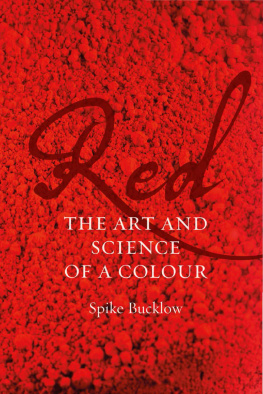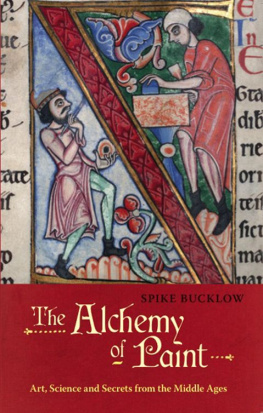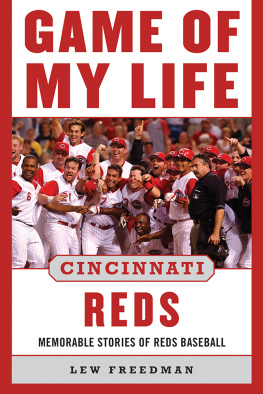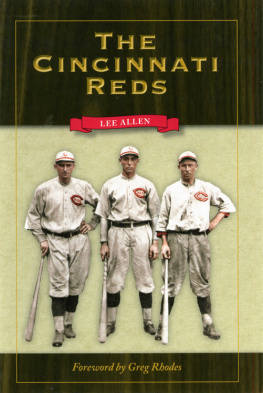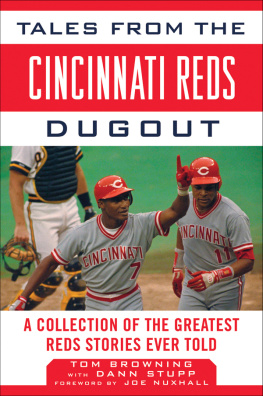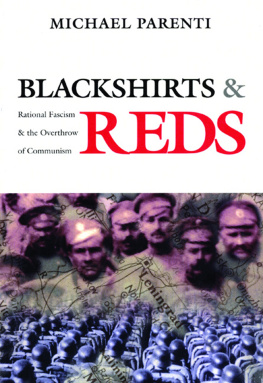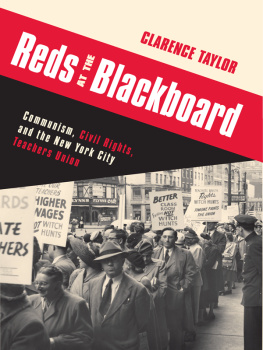Bucklow - Red: the art and science of a colour
Here you can read online Bucklow - Red: the art and science of a colour full text of the book (entire story) in english for free. Download pdf and epub, get meaning, cover and reviews about this ebook. City: London, year: 2016, publisher: Reaktion Books Ltd, genre: Religion. Description of the work, (preface) as well as reviews are available. Best literature library LitArk.com created for fans of good reading and offers a wide selection of genres:
Romance novel
Science fiction
Adventure
Detective
Science
History
Home and family
Prose
Art
Politics
Computer
Non-fiction
Religion
Business
Children
Humor
Choose a favorite category and find really read worthwhile books. Enjoy immersion in the world of imagination, feel the emotions of the characters or learn something new for yourself, make an fascinating discovery.
Red: the art and science of a colour: summary, description and annotation
We offer to read an annotation, description, summary or preface (depends on what the author of the book "Red: the art and science of a colour" wrote himself). If you haven't found the necessary information about the book — write in the comments, we will try to find it.
Bucklow: author's other books
Who wrote Red: the art and science of a colour? Find out the surname, the name of the author of the book and a list of all author's works by series.
Red: the art and science of a colour — read online for free the complete book (whole text) full work
Below is the text of the book, divided by pages. System saving the place of the last page read, allows you to conveniently read the book "Red: the art and science of a colour" online for free, without having to search again every time where you left off. Put a bookmark, and you can go to the page where you finished reading at any time.
Font size:
Interval:
Bookmark:


THE ART AND
SCIENCE
OF A COLOUR
Spike Bucklow
REAKTION BOOKS
Dedicated to Tara
Published by Reaktion Books Ltd
Unit 32, Waterside
4448, Wharf Road
London N1 7UX, UK
www.reaktionbooks.co.uk
First published 2016
Copyright Spike Bucklow 2016
All rights reserved
No part of this publication may be reproduced, stored in a retrieval system, or transmitted, in any form or by any means, electronic, mechanical, photocopying, recording or otherwise, without the prior permission of the publishers
Page references in the Photo Acknowledgments and
Index match the printed edition of this book.
Printed and bound in China by 1010 Printing International Ltd
A catalogue record for this book is available from the British Library
eISBN: 9781780236247
ONE
Animal Reds
TWO
Eastern Trees
THREE
Fruits of the Earth
FOUR
Mysterious Reds
FIVE
Reds for a Better Life
SIX
Brave New Reds
SEVEN
Crossing the Red Line
EIGHT
Red Meanings
NINE
Red Earth
TEN
Red Blood
ELEVEN
Red Fire
TWELVE
Red Passions
T HE EVERYDAY language we all share is generously sprinkled with references to red, and with good reason. We lay out the red carpet to greet celebrities because for over a thousand years, red cloth was the most expensive that money could buy. A red letter day is out of the ordinary for us but has its origins in the use of red, rather than black, ink for some letters and words in medieval illuminated manuscripts. Hitting red lights is a way of saying we have met a series of obstacles, while being tied up in red tape suggests we are struggling with the continuous obstruction of bureaucracy. Wrongdoers are caught red-handed if they bear evidence of their crimes (in which case they may be embarrassed, blushing and red faced). Such phrases allude to blood on (or close to) the surface of the skin. TV documentaries revel in Nature when she is to use Tennysons phrase red in tooth and claw and they tug at the heartstrings with the fate of individual animals, especially endangered ones on the red list. Painting the town red is a celebratory activity that might make a more sober and sedate townsperson see red or even become helplessly engulfed in an angry red mist. Seeing red and the related red rag to a bull are expressions of irritation, provocation or threat and official responses to those posed by foreign powers or homegrown terrorists or, if really unlucky, by the weather include putting armed forces or the whole population on red alert. A red sky at night, shepherds delight and red sky in the morning, shepherds warning is weather-lore that has some validity in Western Europe where clouds often come in from the Atlantic. When the sky is red in the morning the East is red, but this phrase has more significant political connotations due to the adoption of red as the colour of socialism and communism. This association spawned the red menace, red peril and red revolution together with Western fears of reds under the beds and the alternate responses of being either better dead than red or better red than dead. Then, no sooner had the threat or opportunity for change from without receded, but threats or opportunities for change arose within, with the likes of the Italian red brigade and the feminist Redstockings. Of course, these political colour codes have limited shelf lives but they reflect much older social distinctions, such as the difference between red-blooded working men and others, like the effeminate and the aristocratic or blue-blooded.
Sometimes red is understood relative to another colour. In twenty-first-century economics, the debt-averse try to avoid being in the red and prefer being in the black, but in nineteenth-century literature, Stendhals The Red and the Black referred to the Church and State. Red was juxtaposed with white in revolutionary Russia (Bolshevik and Tsarist) and these two colours often seem to be in conflict. Before the Bolsheviks and Tsarists there were, for example, the Houses of Lancaster and York (red and white roses) and before them, the Britons and Saxons (red and white dragons, according to Merlin). Red is paired with blue in class-war or two-party politics (left and right), and with green in traffic lights (stop and go) and on power tools (off and on). At other times, reds meaning is an absolute. Sometimes red phrases have very literal meanings among other things, red eye can refer to conjunctivitis, a badly timed long-haul flight or a consequence of flash-photography. Yet again they dont have literal meanings but can refer to things that are not red, like the Red Sea (unless it is suffering a bloodbath or an algal bloom). Some reds dont even exist, like the red line that must not be crossed.
One cannot generalize about the red in red phrases. And just as the quality of redness seems hard to pin down in language, so red also resists psychological generalizations. Red triggers different things in us at different times, but wherever it is, red often has shock-value. Red is associated with anger, shame, fear, attraction and an extraordinary range of emotions. Given reds apparently mercurial character, can there be a common thread that runs through the colour? Is there, in fact, a red thread?

1 Alphonse Allais, Apoplectic Cardinals Harvesting Tomatoes on the Shore of the Red Sea (Aurora borealis Effect), 1897, monochrome on paper. This contemporary parody of Impressionism significantly pre-dates the Abstract Expressionists colour field paintings of the 1940s, 50s and 60s so it would seem churlish to insist that, usually, the Red Sea is not in fact red.
The English Navy has a certain arrangement by which every rope in the Royal Fleet, from the stoutest to the finest, is spun in such a fashion that a red thread runs through it which cannot be extracted without unravelling the whole rope, so that even the smallest piece of this rope can be recognised as belonging to the Crown.
Goethe made this observation, before the age of steel hawsers, in a novel he wrote around 1809 when in his late fifties. The book has an autobiographical element and unfolds the story of a relationship between a young girl and an older married man,
For two centuries, Goethes red thread has been a motif for recurrent themes, half-hidden harmless details and anecdotes that seem to pop up sporadically to ornament or decorate the whole, but which are actually inseparable from, and define, the bigger picture. This book hopes to find a unifying thread that runs through the story of red.
A much older red thread can be found in the Eastern tradition and it refers to what drew Ottilie and Eduard, Romeo and Juliet, and indeed all lovers, together in the first place. This invisible elastic red thread joins soulmates and, depending on the individuals life choices, it may stretch to breaking point or bind them inseparably. The European tradition doesnt share this particular red thread, although it does recognize the effects on our relationships of the threads of fate spun by the Greek goddess Clotho, then measured and cut by her sisters Lachesis and Atropos. Apollodorus, Ovid and other classical authorities do not tell us the colour of these life-threads, yet the thread that first gives us life, the umbilical cord, is, or at least carries, red.
Font size:
Interval:
Bookmark:
Similar books «Red: the art and science of a colour»
Look at similar books to Red: the art and science of a colour. We have selected literature similar in name and meaning in the hope of providing readers with more options to find new, interesting, not yet read works.
Discussion, reviews of the book Red: the art and science of a colour and just readers' own opinions. Leave your comments, write what you think about the work, its meaning or the main characters. Specify what exactly you liked and what you didn't like, and why you think so.

